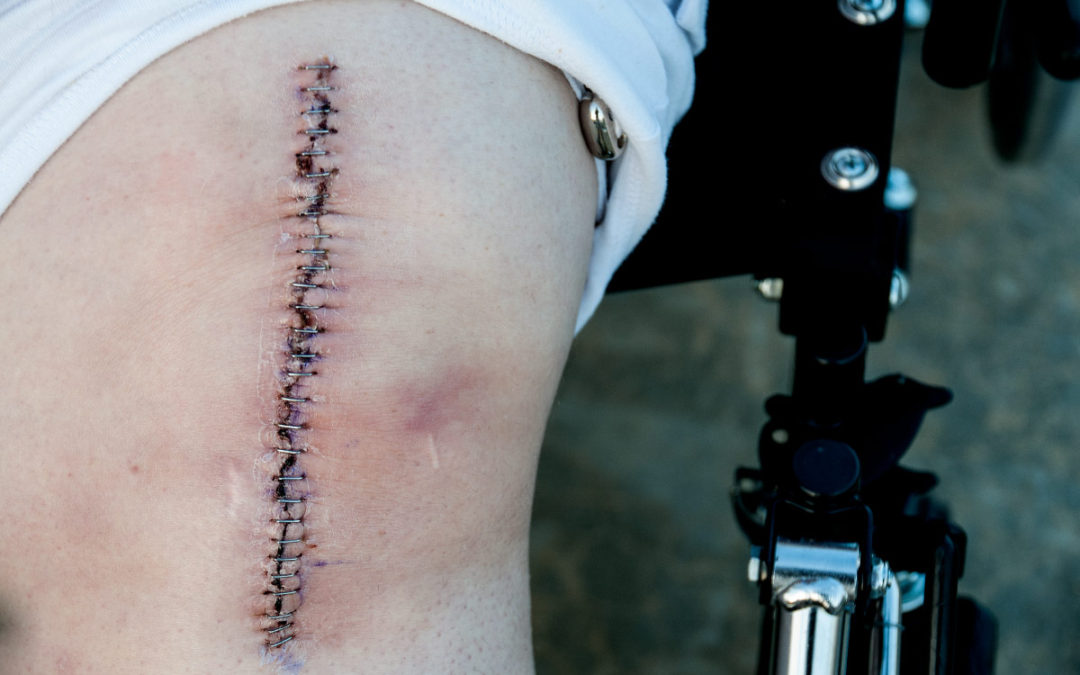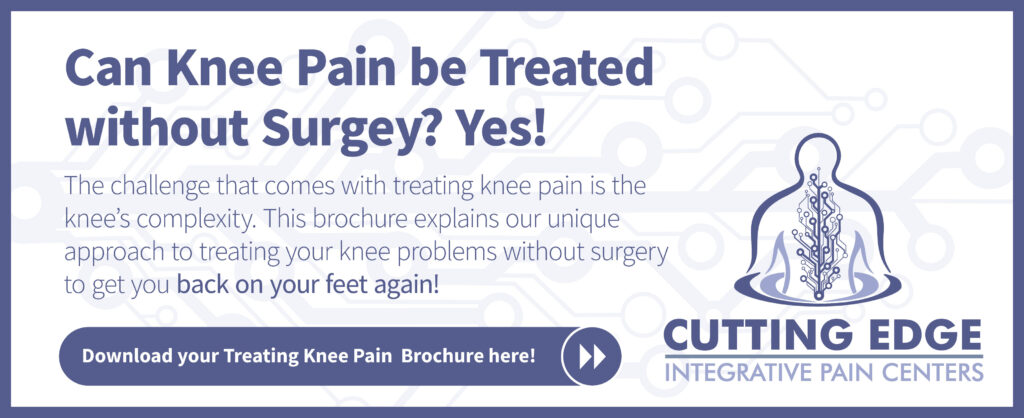Knee replacement should not be taken lightly. After all, in a knee replacement, the knee joint is amputated, the ends of the long bones that connect to the joint are sawed off, and a fake joint is jammed in to replace the original joint structure. However, it seems like knee replacement surgeries are being performed more and more, even though studies show that many knee replacements may not even be necessary. Oftentimes, knee pain can have other causes, such as the spine. For those cases where knee pain is caused by a knee issue, regenerative medicine treatments can frequently be used to avoid knee surgery. In fact, knee replacement surgery should be avoided at all costs and only considered as a last-resort treatment option. Here’s why.
Keeping our patients safe and healthy is our top priority.
Click Here to Learn About Our Telemedicine System.
It Doesn’t Always End Pain.
Most people elect to have a knee replacement in order to relieve their suffering from chronic pain. Unfortunately, many patients report knee pain continuing after knee replacement. Some studies have shown pain rates and percentages following knee replacements increase at two, three, or four years following surgery.
One explanation for this is that in many cases the knee itself is not the root cause of the pain. If a lingering pain in the knee was being caused by a low back issue—spinal nerves, discs, or joints for example—there is no way that the pain would be eliminated by knee replacement surgery. The pain must be traced to its root cause and that root cause must be the focus of treatment.
Knee Replacement Doesn’t Always Return You to Normal Activities.
Here’s a startling fact to consider: only one in twenty patients actually achieve anything approaching normal physical activity after knee replacement surgery.
There is actually a disturbing trend of marketing replacements to patients who are 55 or younger. These patients put higher demands on their knee replacements than patients who are older than 55. And, you might think activity-level outcomes would be better in a younger population. Unfortunately, there are often poorer results due to these higher demands on the artificial joint. And with these poor results, greater pain. In fact, 15% of these patients will undergo a revision of their knee just five years following the original surgery.
Devices Don’t Always Work.
Data shows us that the components of knee prostheses can cause problems in many patients. Studies have identified two groups of people who are at a significantly higher risk for problems like rejection or loosening of the device and/or toxicity from the wear particles: people with allergies and people with metal sensitivities.
Even people with seemingly unrelated allergies, like pollen or cat dander, can have issues. That’s because these patients have hyperactive immune systems and inappropriately secrete antibodies to rid themselves of things their bodies have mistaken as dangerous. If that thing is a joint replacement device, that drastically affects the outcome of the procedure.
Patients with allergies and sensitivities also experience more pain after knee replacement surgeries due to the chronic inflammation caused by the device, which is perceived as “foreign” by the body. This isn’t limited to the hardware; patients can also be allergic to the cement used to bond the device to the bone during the knee replacement.
Avoid Surgery with Cutting Edge Pain Centers
So, before you commit to a knee replacement surgery, make sure you explore your options. Make sure you determine that the knee is the issue. And if the knee is the root cause of your pain, consider alternatives to invasive surgery. For instance, if you have mild arthritis, precise, fluoroscopic, ultrasound-guided injections of highly concentrated platelet-rich plasma work well in most cases. These natural growth factors from your platelets can support cartilage health. If your arthritis is moderate or severe, precise, fluoroscopic, ultrasound-guided injections of your own stem cells may do the trick. If you’re not sure about the options available to you, feel free to reach out to us. We are here to help.


